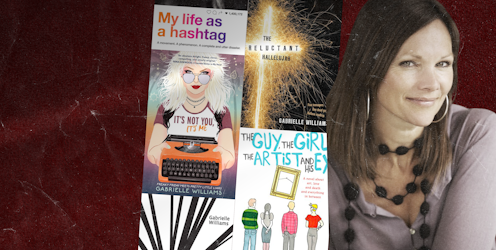
This week, the Australian literary community was devastated to learn of the untimely death of Gabrielle Williams, acclaimed author of books for young adults.
Williams suffered a stroke at Readings bookstore where she worked as manager of the Readings Prizes, grants officer for the Readings Foundation, and as a bookseller. She was admitted to the intensive care unit, but the pressure on her heart proved fatal. She died on Saturday January 21, with her family by her side.
She was a friend and writing compatriot, and I can’t fathom the loss of her.
The suddeness of moving from a world with Gab to one without her has made this week drift strangely. I forget and remember and forget and remember. The feeling is tidal. I want to pay tribute to Gab and her young adult novels, produced over the last decade-and-a-half, which are the reason I was ever lucky enough to meet her and even to know her at all.
Light, shade and equilibrium
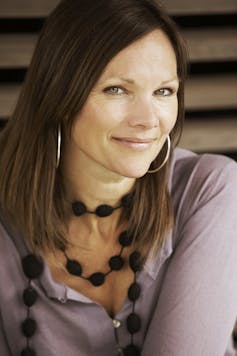
It’s hard to convey what a neon-bright, super-smart, kind and hilarious gem of a person Gabrielle Williams was. I was fortunate to know her amid a group of Melbourne women writers of young adult and children’s fiction. We attended the same festivals, conferences and events.
After hearing the news, we met up to share stories. Through it all, it seemed inconceivable that Gab was not going to just burl around the corner to join us, looking like Penny, one of four lead characters in her novel The Guy, The Girl, the Artist and his Ex, “thrown together and gorgeous”, as Gab always was.
In a 2021 interview with Joy Lawn, Williams spoke to the twin moods of “wistful” and “uplifting” that characterised what has become her last novel, It’s Not You, It’s Me.
The wistfulness of a life that hasn’t been lived to its fullest extent […] Regret for things that never were, and for things that are no longer. But also, the power that comes when you recognise that you can still make changes to your life, that you can have agency over your own life, no matter how old you are.
This sentiment is Gab personified. She had, in the words of author Fiona Wood, “an equilibrium and grace” that was guided by her ability to see the bigger picture, and the funny, ironic, sometimes mortifying, mortal side of life.
In the bones of all her books is the philosphy: “So long as you take the opportunities that are presented to you, the universe will take care of you.” As Beatle’s mum counsels her son in Williams’ brilliant young adult debut, Beatle Meets Destiny:
It’s all about light and shade. The sad stuff is just as important as the good stuff, because it gives you a chance to examine your life and what you want to change.
A copywriter’s ‘quicksticks’ creative brain
Before her writing career took off, Gab worked in advertising. She had a copywriter’s quicksticks, smart-fix, creative brain: one that can take an abstract idea and distil it into something workable, relatable. And memorable.
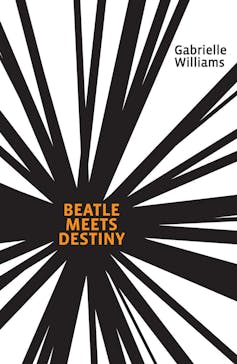
In Beatle Meets Destiny, superstitious 18-year-old Beatle (whose real name is John Lennon) meets Destiny McCartney on Friday the 13th and falls in like. It’s fate! The only trouble is Beatle already has a girlfriend, who is also his twin sister Winsome’s bestie.
Gab’s narrative voice is like a fabulous friend regaling you over a long boozy lunch: now pinning down details, now swooping out; leaving you dangling, then drawing you back. Gab was a great deployer of the interstitial narrative, of splicing in stories within stories, and playing around with normal genre conventions. Beatle meets Destiny has a thread of “cosmic twin” stories throughout. It was kind of a tease to work out how they would fit together, but you went with it.
Beatle was followed by four more young adult novels: The Reluctant Hallelujah, The Guy, The Girl, the Artist & his Ex, My Life as a Hashtag and It’s Not You, It’s Me.
Her books were shortlisted for some of Australia’s most prestigious awards, including the Prime Minister’s Literary Awards, the Victorian Premier’s Literary Awards, the New South Wales Premier’s Literary Awards, the CBCA Awards, and the Gold Inkys.
Gab’s books were for and about young adults, although “old” adults could, and did, love them too. She showed a great respect for and understanding of teenagers. She didn’t subscribe to the notion that adults should be written out of the story. The fullness of life for her characters is shown through their relationships with friends and family and community.
Her novels were multi-layered, often conceptually complex, dealing with chance, everyday magic, music, art and all kinds of love. Her young characters were flawed, capable of sublime (and sublimely entertaining) fuck-ups, and always forced to reckon with the fallout, to accept or to adapt.
Love of language
“She always wrote from her heart,” Anna McFarlane, Gab’s publisher at Allen & Unwin, said by email.
She wanted her characters to behave in ways that reflected reality. She was really drawn to telling stories in which characters flounder. She didn’t judge them for smoking, or drinking, or getting pregnant, or lying through their teeth. In My Life as Hashtag, Marie Claude, who has been excluded from a social gathering, posts something mean which goes viral. She is a bully. But we get her. And we love her.
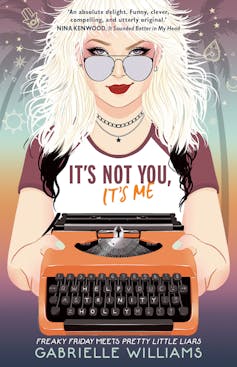
Gab’s love of language is evident in all her books. Her characters frequently have their own idioms and theories, on everything from cannibal killers, (Beatle Meets Destiny), to why a boy might not call you back: “He broke both his hands” (also Beatle Meets Destiny). Sly humour, puns and malapropisms abound.
Beatle’s infidelity is a display of “bad boyfriend-ese”; Marie Claude (MC) throws shade on her ex-friend via a series of faked celebrity quotes: “Fook Anouk. Go have a Sook.” When Guy’s party, in The Guy, the Girl, the Artist & her Ex, spirals out of control, he feels “Cat in the Hat-stressed”. Dodie in The Reluctant Hallelujah introduces herself as “Doe as in doe-a-deer-a-female-deer; Dee as in de-lighted to meet you.”
Power of place
Gab set most of her novels in Melbourne because, she once said, she was lazy and it made for easy research. But there is nothing lazy in her descriptions. They show the power of place on a person’s psyche.
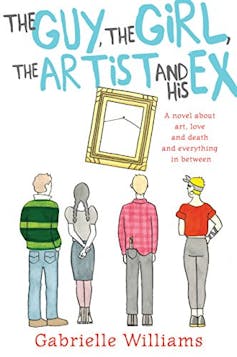
St Kilda’s Esplanade Hotel is “a grand old white building with flaky paint reminiscent of someone’s badly burnt back”. The once-named number 69 tram (now number 16) takes the reader from “far Kew” through “near Kew” and all the way to the “far canal” of Elwood". (“Say it out loud. You should get it.”) The Yarra is a “big, upside down” river that’s “deep as well as ball-tighteningly cold”.
Melbourne’s Birrung (Yarra River) has a significant role in my favourite of Gab’s books, The Guy, The Girl, The Artist & his Ex. When I read that chapter (readers who know the book will know which one I mean), I think I might have stopped breathing. The book is speculative historical fiction, a re-imagining of the story behind the theft of the Weeping Woman from the National Gallery of Victoria in 1986.
Mcfarlane says, “Gab loved the aesthetic of the eighties: the music, the fashion, but also, I think, the lack of parental supervision. She loved her characters to get messy.”
The Guy, The Girl, The Artist & his Ex is also a romance and a near-tragedy. In it, Gab mixes the urban legend of the Australian Cultural Terrorists, and the Mexican folk story of La Llorona – the Crying Woman – remixing, re-mything, using the known to ease the reader into new interpretations of the mysteries of life.
In The Reluctant Hallelujah, Dodie and her friends must transport the corpse of Jesus Christ Himself from her family’s basement to his next “checkpoint”. To do this, they must go via the storm drains of Melbourne. Naturally, things go wrong, and they end up far from home, but still in our reality.
A questing writer
Although her novels were firmly set in the real, there was still this “otherworldliness” that Gab frequently tuned into. I think of her as a questing kind of writer: everything went in. And so to read her work is to always be discovering.
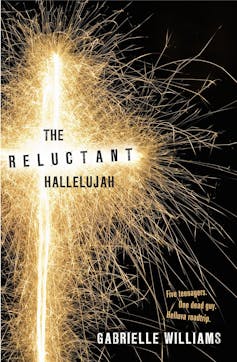
For example, did you know that the official term for stealing underwear off a clothesline is “snowdropping”? (Beatle Meets Destiny.) That “glow-in-the-dark green phytoplankton that produce oxygen in marine and freshwater are called "dinoflagellates”? (The Reluctant Hallelujah.) Or that Picasso’s cruel treatment of Dora Marr ignited a curse to last the rest of his days? (The Guy, the Girl, the Artist and his Ex.) Before reading Gab Williams’ work, I did not know these things either.
Gab was a black belt in karate. Just FYI. And she made a mean cocktail. She was a lover of travel and dogs and her family and friends, and big earrings. When she did jigsaw puzzles, she didn’t start at the corners, and I wonder if that was how she wrote her books too. From the middle out.
It makes sense. Her narratives were very much path-less-travelled. If, as a reader, I didn’t know where the story was going, I felt sure that wherever we ended up would be worth it.
If you have not read her books, do so. You won’t be sorry you read them; you will only be sorry there won’t be more.
Simmone Howell does not work for, consult, own shares in or receive funding from any company or organisation that would benefit from this article, and has disclosed no relevant affiliations beyond their academic appointment.
This article was originally published on The Conversation. Read the original article.







